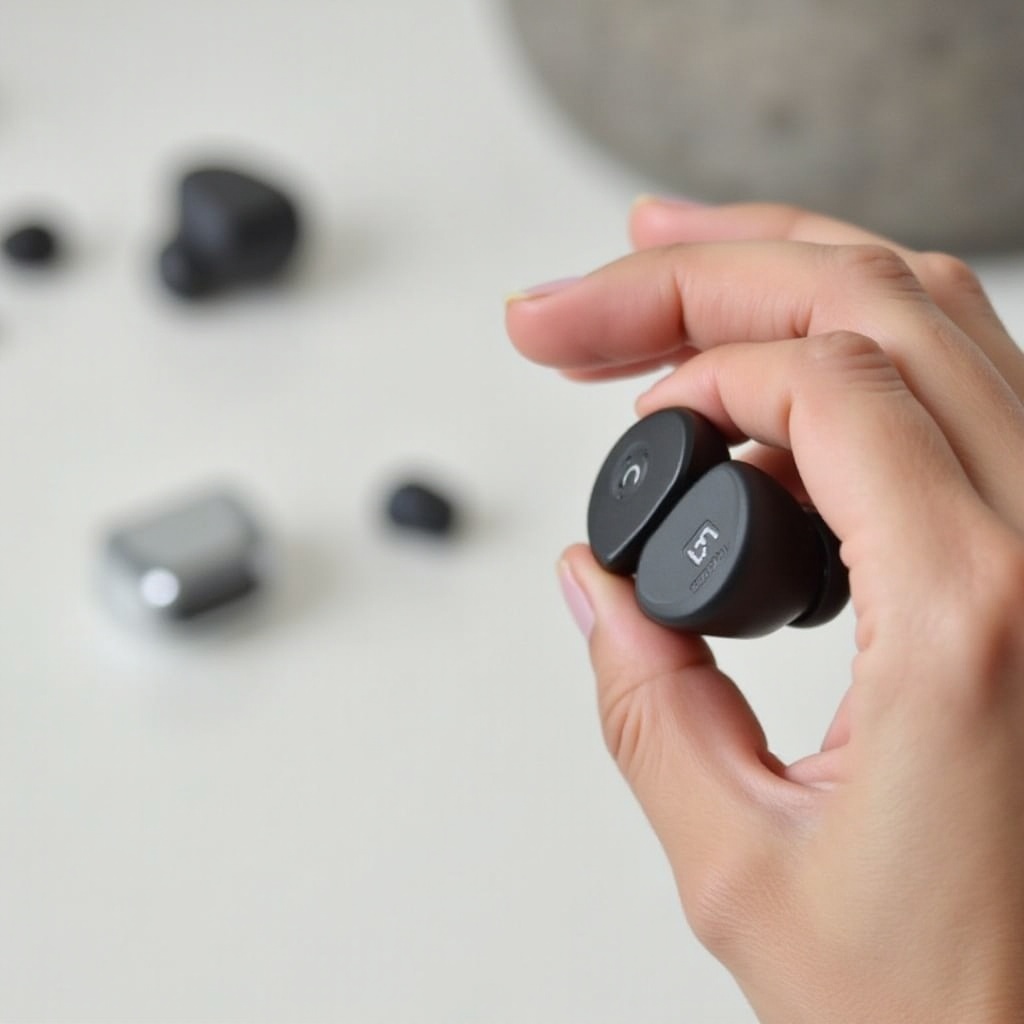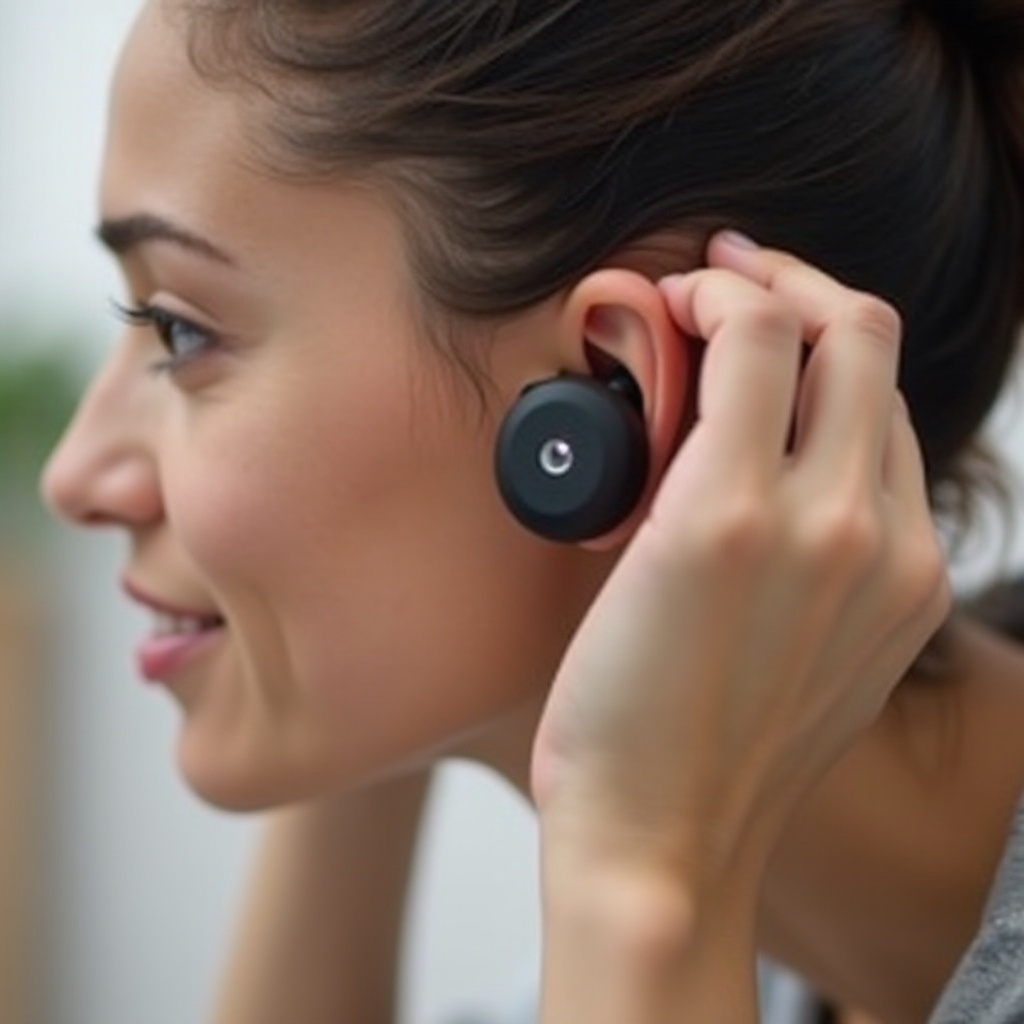Introduction
Setting up your earbuds to work as hearing aids is an innovative solution for those who may not yet need a professional hearing aid or are looking for a more affordable option. By leveraging today’s advanced technology, you can turn everyday devices into tools that improve your quality of life. This guide walks you through everything you need to know, from understanding why you might need earbud hearing aids to troubleshooting common issues.

Understanding the Need for Earbud Hearing Aids
Hearing loss affects millions of people around the world. Traditional hearing aids can be expensive and, at times, inaccessible for some. Earbuds as hearing aids come in as an efficient alternative, offering mobility and ease of use.
The rise of wireless technology and smartphone applications makes it possible for earbuds to not only play music but also amplify environmental sounds. This could be particularly useful in social situations, professional settings, and for seniors who might be experiencing early stages of hearing loss. Equipped with the right technology, your standard wireless earbuds can provide similar benefits as hearing aids.
Necessary Equipment and Initial Setup
Before diving into the setup process, ensure you have all the necessary equipment. Here’s a quick checklist:
- Wireless Earbuds: Opt for high-quality earbuds with a reliable connection.
- Smartphone or Tablet: This is essential for downloading apps and controlling settings.
- Hearing Aid Apps: Several apps are specifically designed to help convert earbuds into hearing aids.
Begin by charging your earbuds fully. Download and install your chosen hearing aid app from your app store. Open the app and grant required permissions such as microphone and Bluetooth access.
Choosing the Right Earbuds
Not all earbuds are created equal, and choosing the right pair is crucial for an effective setup. Here are some factors to consider:
- Sound Quality: Look for earbuds known for clear, high-fidelity audio.
- Comfort: Since you’ll be wearing them for extended periods, comfort is key. Look for ergonomic designs with multiple ear tip sizes.
- Battery Life: Ensure long battery life to avoid frequent recharging.
- Connectivity: Reliable Bluetooth connectivity is essential for real-time sound amplification.
Brands like Apple AirPods, Samsung Galaxy Buds, and Bose SoundSport Free are highly recommended due to their superior quality and user reviews.

Configuring Your Earbuds
Once you’ve chosen your earbuds and installed your app, it’s time for configuration:
- Pair the Earbuds: Go to your device’s Bluetooth settings and pair your earbuds.
- Open the App: Launch the hearing aid app. Most apps will guide you through the initial setup.
- Customize Sound Settings: Use the app’s equalizer to adjust treble, bass, and mids according to your hearing needs.
- Test the Sound: Ensure audio output meets your requirements by testing in a quiet environment.
Using Hearing Aid Apps
Several hearing aid apps are available for both iOS and Android. Some popular options include:
- Petralex: Offers customizable sound settings and noise reduction capabilities.
- HearMax: Provides volume boost and various sound profiles.
- Bose Hear: Developed for Bose earbuds, it fine-tunes audio based on user preferences.
These apps offer additional features such as background noise reduction, speech amplification, and custom sound profiles for different environments like restaurants, outdoors, and offices.
Customizing Sound for Your Needs
After setting up your earbuds and app, the next step is personalized customization. Here’s how you can ensure the best audio experience:
- Audio Test: Perform a hearing test within the app to tailor sound settings based on your hearing levels.
- Adjust Sound Profiles: Modify different sound profiles for various environments.
- Fine-Tune Settings: Use manual adjustments if the presets don’t match your specific needs.
Experiment with different configurations to find the sweet spot that works best for you.
Ensuring Comfort and Longevity
Long-term use of earbuds as hearing aids requires attention to comfort and durability. Transitioning from customizing sound to maintaining comfort and longevity is crucial to ensure the continued effectiveness of your setup:
- Fit: Ensure a snug fit without causing discomfort. Use appropriate ear tips.
- Breaks: Every few hours, take short breaks to avoid ear fatigue.
- Cleaning: Regularly clean earbuds to avoid ear infections and improve sound quality.
By prioritizing these practices, you can enhance the comfort and longevity of using your earbuds while maintaining optimal hearing aid functionality.
Troubleshooting Common Issues
Even with the best setup, you might encounter some issues. Here are solutions to common problems:
- Connection Drops: Ensure your phone and earbuds have Bluetooth turned on and are within range. Restart devices if necessary.
- Sound Quality Issues: Check for any updates in your app or phone software. Clean earbuds to remove any blockages.
- App Crashes: Clear the app cache or reinstall the app to resolve software glitches.

Conclusion
Turning your everyday earbuds into hearing aids can be a game-changer. With the right equipment, apps, and configuration, you can significantly improve your hearing experience. This guide provides the steps necessary to make earbuds as efficient as possible, ensuring you get the most out of your personal audio devices.
Frequently Asked Questions
Can any earbuds be used as hearing aids?
Not all earbuds are suitable. High-quality wireless earbuds with clear audio output, such as those from Apple, Samsung, or Bose, are recommended for the best experience.
Are there specific apps recommended for earbud hearing aids?
Yes, several apps can be used, including Petralex, HearMax, and Bose Hear. These are designed to enhance audio quality and provide features tailored for hearing aid functionality.
How do I maintain and care for my earbuds for hearing aid use?
Regular cleaning, proper storage, and careful handling are essential. Charge your earbuds fully before use and periodically check for software updates to ensure optimal performance.